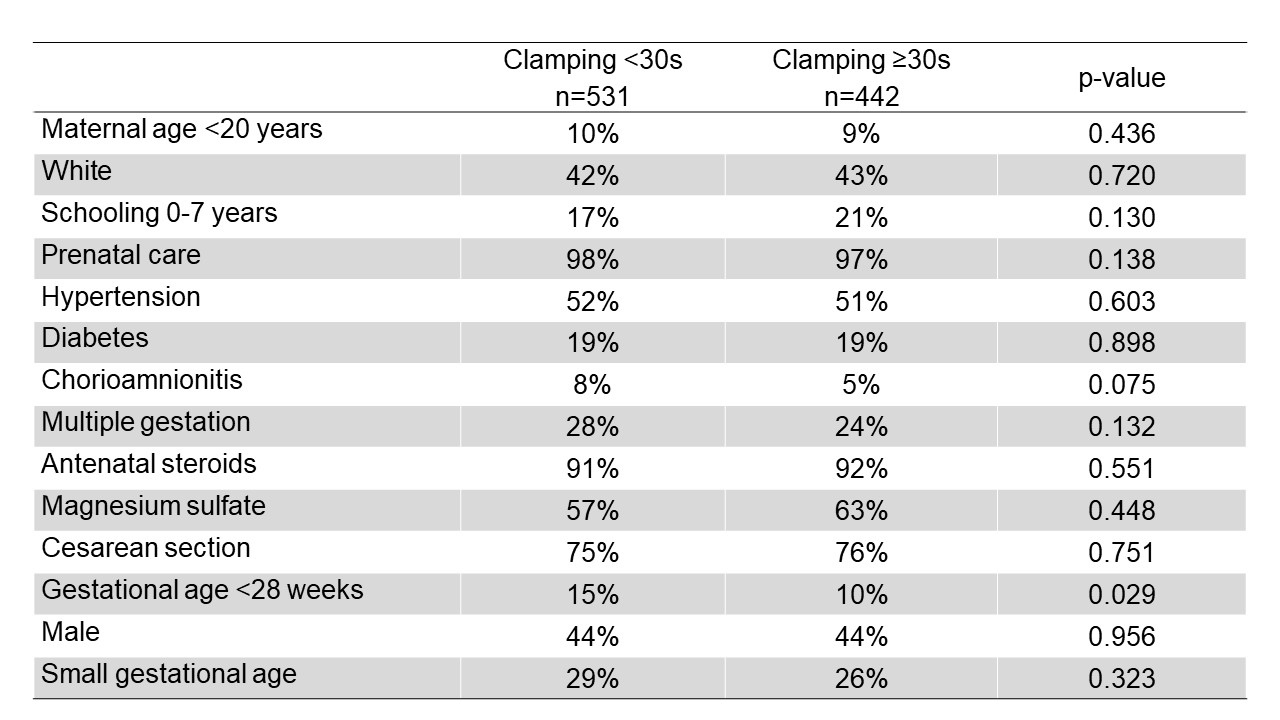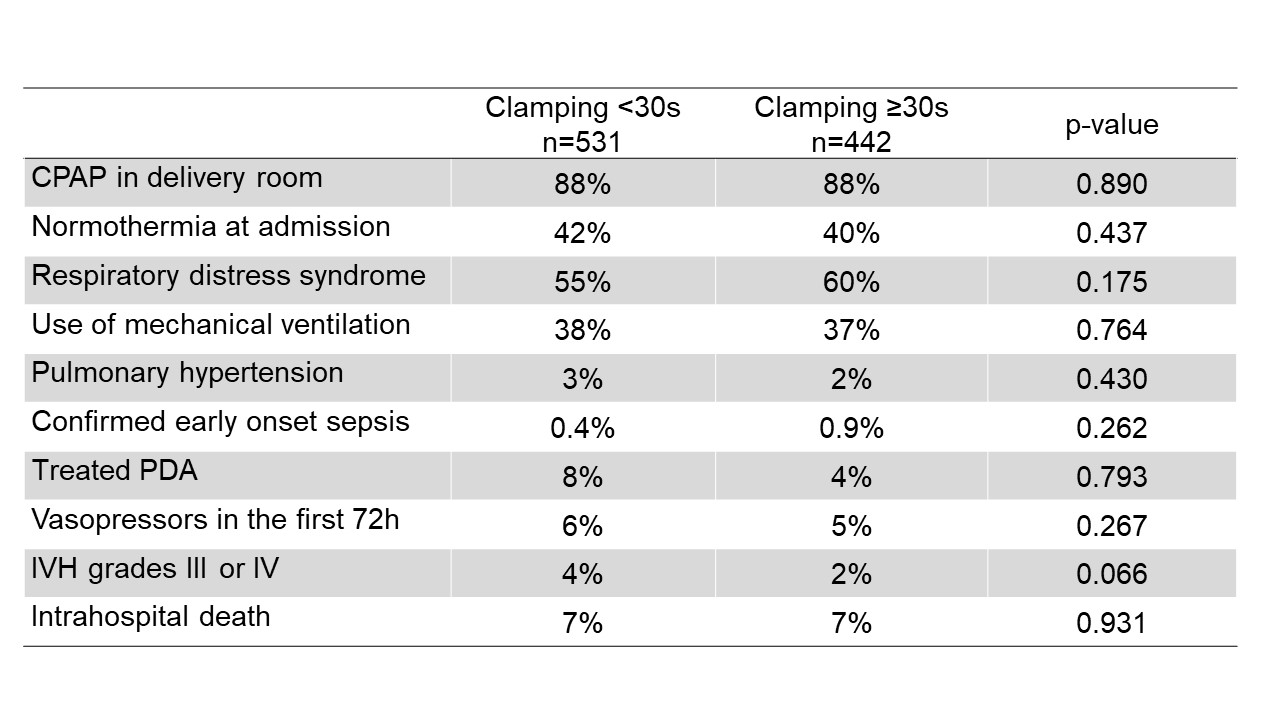Neonatology
Session: Neonatal/Infant Resuscitation 2
275 - Window of opportunity: The practice of cord clamping in very low birth weight premature infants with good vitality at birth in Brazilian public university centers
Monday, May 6, 2024
9:30 AM - 11:30 AM ET
Poster Number: 275
Publication Number: 275.3223
Publication Number: 275.3223

Ruth Guinsburg, MD, PhD (she/her/hers)
Full Professor of Pediatrics
Universidade Federal de São Paulo
Universidade Federal de São Paulo
São Paulo, Sao Paulo, Brazil
Presenting Author(s)
Background: Delayed cord clamping is a neglected and underused intervention, but it has been proven to reduce neonatal mortality in premature babies and can be implemented without additional resources (Hofmeyr et al, Lancet 2023). Since 2016, the Brazilian Neonatal Resuscitation Program has recommended, in newborns < 34 weeks and with good vitality, to clamp the cord between 30-60 seconds after birth.
Objective: To analyze whether the cord clamping guidelines for preterm newborns are being translated into clinical practice in 20 Brazilian public university hospitals.
Design/Methods: Prospective cohort of inborns with 23-33 weeks’ gestation, birth weight 400-1499g, without congenital anomalies, between 2020-2022 and who did not require positive pressure ventilation in the delivery room and with a 1st minute Apgar score ≥7. Cord clamping < 30 or ≥30 seconds was analyzed using descriptive statistics, according to center and year of birth, maternal and neonatal characteristics. Variables associated with cord clamping ≥30 seconds were analyzed by logistic regression. Also, the association between cord clamping and morbidities related to hemodynamic transition at birth were analyzed by logistic regression adjusted by center and year of birth.
Results: Among 3488 inborns with 23-33 weeks’ gestation, birth weight 400-1499g, without congenital anomalies, between 2020-2022, 973 met the inclusion criteria: 531 with clamping < 30s and 442 with clamping ≥30s. The frequency of clamping ≥30s was 44%, 47% and 45% in 2020, 2021 and 2022, respectively. The frequency of clamping ≥30s per center is shown in Figure 1. Maternal characteristics and neonatal morbidities of both groups are shown in Tables 1 and 2. Adjusted for center, year of birth, maternal schooling, prenatal care, chorioamnionitis, multiple gestation and use of magnesium sulfate, clamping ≥30s was independently and negatively associated with gestational age < 28 weeks (OR 0.52; 95%CI 0.32-0.83). The only morbidity associated with clamping ≥30s after adjustment for center and year of birth was IVH grades III/IV (0.29; 0.11-0.76).
Conclusion(s): In this multicenter study in a medium income country, cord clamping ≥30 seconds occurred in only 4 of every 10 newborns < 34 weeks and < 1500 grams who did not require resuscitation at birth. The procedure was associated with a decreased chance of severe IVH. There is a great opportunity to improve perinatal practice.
.jpg)


